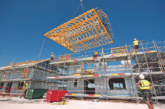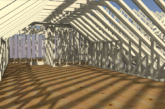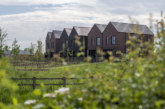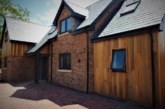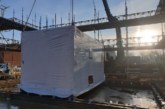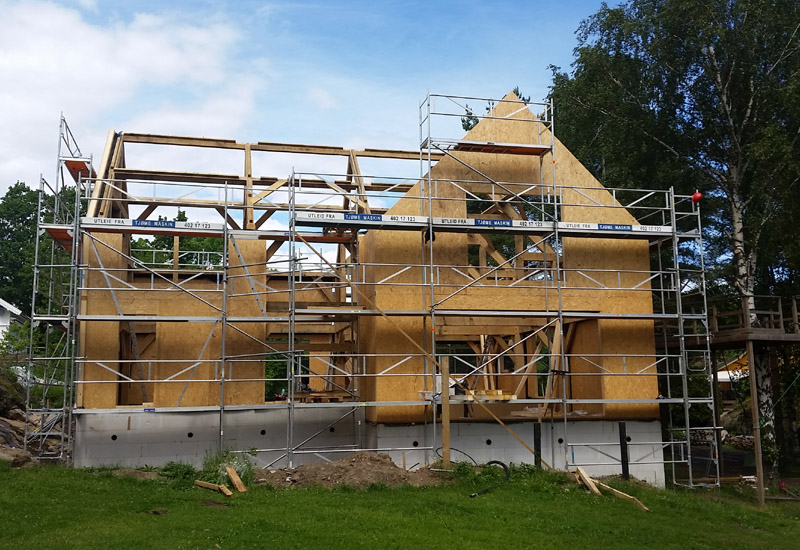
With demands for new homes showing no signs of abating Matthew Evans, Technical Manager at Kingspan TEK, looks into the opportunities presented by offsite construction.
In February, the government’s housing white paper identified the need for greater innovation within the housing sector, highlighting offsite construction as a particular area of focus for raising industryproductivity. The report marks the latest step in the remarkable rise of the ‘third method of construction’ over recent years which has seen it go from virtual industry pariah to the bright hope for the future. So, what has changed and can offsite truly deliver on these promises?
Changing times
Until recently, it is fair to say prefabrication had been looked on with a good deal of scepticism in the UK. This view is mainly thanks to the construction methods of the post-war era – such as the reinforced concrete REEMA homes. At a time when construction materials were in short supply and quantity was prioritised, these methods provided a quick and relatively simple solution to the immediate need for housing.
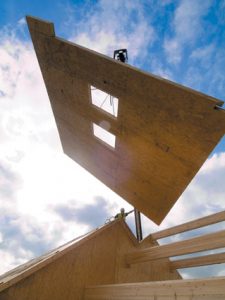 Inevitably, however, the combination of cheap materials, poor detailing and little or no insulation led to a long list of issues with the properties and made it difficult for prospective homeowners to obtain mortgages. As a result, offsite methods fell by the wayside in much of the UK.
Inevitably, however, the combination of cheap materials, poor detailing and little or no insulation led to a long list of issues with the properties and made it difficult for prospective homeowners to obtain mortgages. As a result, offsite methods fell by the wayside in much of the UK.
Over the past couple of decades, attitudes have started to shift. Modern offsite construction methods are vastly superior to their predecessors, offering significant design freedom and excellent fabric performance. Offsite construction approaches such as Structural Insulated Panels (SIPs) have now become a popular method for housing being constructed to even the most demanding energy efficiency standards, such as Passivhaus.
Fabric performance
An example of a typical SIP construction would be two OSB3 (Oriented Strand Board) facings with a rigid thermoset insulation core. The demanding thermal performance requirements of the Passivhaus standard can then be easily met with the addition of an insulated lining.As well as providing excellent levels of insulation, the jointing arrangements inherent in SIPs can provide extremely airtight structures, with air-leakage rates as good as 1 m3/hour/m2 at 50 Pa. Once airtight tape is applied to junctions, this rate can be reduced even further to the 0.6 air changes per hour @ 50 Pa required by the Passivhaus standard.
SIPs can also help to avoid problems which may be associated with other common construction techniques, such as air-leakage through poorly-sealed sockets. The lightweight SIPs can be quickly and easily assembled by a small team of workmen, reducing
timescales and skill requirements or switches, at floor zones through masonry cavity walls, under skirting boards and through poorly-sealed loft hatches and top-storey ceiling light fittings.
Modern offsite construction methods are vastly superior to their predecessors, offering significant design freedom and excellent fabric performance.
The jointing arrangements in SIPs mean that the insulation layer is typically interrupted by less repeating studwork than in a timber frame, greatly reducing repeating thermal bridging, and their factory engineered design ensures very low levels of linear thermal bridging at junctions and openings.
Solving shortages
Above and beyond the performance of the building envelope – offsite approaches also offer a viable solution to many of the issues currently facing the wider construction industry, such as the ongoing skills shortage. The current situation is only likely to worsen over time with the Construction Industry Training Board estimating in 2013 that 406,000 UK construction workers (around a fifth of the workforce) are due to retire by 2023, with the number of apprentices nowhere near filling the demand.
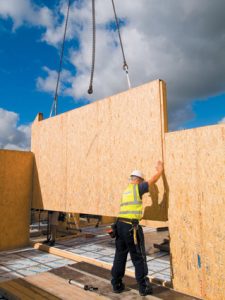 For panelised offsite construction methods including SIPs, the cutting processes are handled within the factory, allowing a high level of precision with only limited human labour requirements. Once the panels are delivered to site, they can be simply erected by a relatively small team of workers with virtually no need for onsite adjustments – greatly reducing site waste.
For panelised offsite construction methods including SIPs, the cutting processes are handled within the factory, allowing a high level of precision with only limited human labour requirements. Once the panels are delivered to site, they can be simply erected by a relatively small team of workers with virtually no need for onsite adjustments – greatly reducing site waste.
Perhaps more importantly, the speed and predictability of offsite construction methods means they can help to deliver on the urgent demand for quantity within the housing market. SIPs, for example, can be designed, pre-cut and delivered to a clear schedule. Their dry construction is much less reliant on the weather conditions and the outer shell of a standard home can typically be erected within a matter of weeks.
Once a breather membrane is applied to the outer face of the SIPs, the property is effectively weather tight. This allows follow-on trades to begin work at a much earlier stage in the project than is possible with traditional masonry construction approach, further reducing project timescales. Estimates have suggested that homes constructed using offsite approaches can be built up to 30% faster than traditional methods.
Policy change
Whilst on the rise, offsite methods still make up only a relatively small proportion of housebuilding within the UK. A number of measures were included within the ‘Fixing our broken housing market’ whitepaper, to further encourage adoption of offsite methods.
 The Home Building Fund will provide significant short and long term funding to support, amongst other things, more innovative approaches to construction, including offsite methods. The Accelerated Construction Programme, which aims to reduce risk on brownfield and former government sites, should also help to champion the use of offsite construction methods. A joint working group including lenders, valuers and industry experts is also proposed to encourage the collation and sharing of data measuring the longterm performance of offsite technologies to ensure that mortgages are readily available across a range of tested methods of construction.
The Home Building Fund will provide significant short and long term funding to support, amongst other things, more innovative approaches to construction, including offsite methods. The Accelerated Construction Programme, which aims to reduce risk on brownfield and former government sites, should also help to champion the use of offsite construction methods. A joint working group including lenders, valuers and industry experts is also proposed to encourage the collation and sharing of data measuring the longterm performance of offsite technologies to ensure that mortgages are readily available across a range of tested methods of construction.
Whilst the demand for new housing has arguably never been greater, it is essential that the mistakes of the post-war era are not repeated and that new homes are completed to a high standard. Modern offsite approaches can help to resolve many of the practical issues currently facing housebuilders, allowing energy efficient homes to be constructed quickly and predictably with a reduced reliance on skilled labour.
Main Image: Westwind Oak



